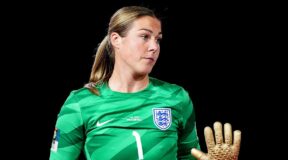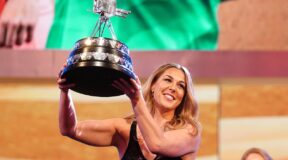Harry deLeyer, a horse trainer and rider who, in what can only be described as a nags-to-riches story, turned an aged, abandoned gelding named Snowman into one of the most acclaimed show horses of all time, died on June 25 in Stanardsville, Va. He was 93.
His daughter Harriet confirmed his death, at an assisted living facility.
Mr. deLeyer (pronounced deh-LAY-er) was a Dutch immigrant who had worked with the anti-German resistance during World War II and arrived in the United States in 1950 with his wife, Johanna, his work experience largely confined to his family farm in the Netherlands. He soon took a job as the riding instructor at a girls school on Long Island.
In 1956 he traveled to a horse auction in Pennsylvania to see if he could pick up a few animals for his beginner students. But he had to stop for a flat tire, and by the time he arrived for the auction, it was over. The horses that hadn’t been sold were being loaded onto a truck, bound for the slaughterhouse.
Mr. deLeyer peered inside, and a grayish-white horse caught his eye. The others were visibly frightened; this one was calm. Most had obvious injuries; this one, aside from a few superficial scars, was healthy and well-built. He had been a plow horse and, at about 8 years old, was starting to wear out.
Mr. deLeyer, who grew up around work horses, saw something the other buyers hadn’t. He bought the horse for $80 (about $750 in today’s money), at a time when prize horses might have fetched over $40,000 (or about $375,000 today). When he arrived home with the horse, his 4-year-old daughter, Harriet, named it Snowman.
Snowman was supposed to be a lesson horse for new riders. But as he gained strength, he showed promise as a jumper, and Mr. deLeyer was always on the lookout for new show horses. He and Snowman began to train.
“I think that horse knew my father had given him a second chance,” Harriet deLeyer said in a phone interview. “My father asked him to do some crazy things, and he would do it.”
Two years later, Mr. deLeyer rode Snowman in his first competition, a local show, where they easily took the blue ribbon in the jumper class. Another, bigger show followed, where they knocked off the two-time defending champion. More victories followed.
“There seems to be no end to Snowman’s winning titles at the nation’s biggest shows,” the journalist Marie Lafrenz wrote in The New York Herald Tribune.
Horse shows were widely popular in the 1950s, especially around New York City, where the well-to-do both participated and observed — the National Horse Show at Madison Square Garden kicked off the Manhattan social season.
The press fawned over Snowman and Mr. deLeyer, as did the fans, who loved their scrappy approach to an otherwise elite endeavor. Where many teams arrived with fancy equipment and large entourages, Mr. deLeyer showed up with Johanna, their eight children and his occasional student, all of whom pitched in. A few of them hand-painted the sign outside their temporary stable during their first appearance at Madison Square Garden, in 1958.
Snowman took the blue ribbon that year, was named horse of the year by the American Horse Shows Association (today the United States Equestrian Federation) and won the Professional Horsemen’s Association championship, making him one of the few horses to win what was then considered the sport’s triple crown.
Mr. deLeyer and Snowman narrowly missed repeating their achievement the next year, again winning at Madison Square Garden and capturing the horse of the year title.
The improbable story of Harry deLeyer and his “Cinderella Horse” made them celebrities. They appeared on the “Tonight Show,” where Johnny Carson took a turn in the saddle. They traveled to Europe. Fans came from around the world to visit their Long Island paddock.
Appearing on “The Dick Cavett Show,” Mr. deLeyer said: “Snowman and me both came from nothing. But together we made it to the top of the world.”
Snowman continued to compete, but less often, and winning fewer titles as he faced younger and younger horses. He and Mr. deLeyer more often appeared at exhibitions — despite his age, he could easily clear seven-foot-tall obstacles and took to jumping over other horses as part of his show.
Mr. deLeyer always expressed amazement at Snowman’s strength — “a freak of nature,” he once called him — but he insisted that the key to the horse’s success was his demeanor: calm, friendly, willing. Out of the ring, Snowman became a part of the deLeyer family, lake-swimming with the children in the summer and pulling them on skis in the winter.
Snowman officially retired in 1969, at Madison Square Garden, where the crowd stood cheering and singing “Auld Lang Syne.”
In 1974, Snowman began to experience kidney failure, and the deLeyers decided to euthanize him. For all his hard-bitten farmboy attitude, Mr. deLeyer at first couldn’t bring himself to be there when the veterinarian took Snowman from his stable. But the horse refused to go until Mr. deLeyer arrived, teary-eyed, to walk him out.
Henricus deLeyer was born on Sept. 21, 1927 in Sint-Oedenrode, a Dutch town near the Belgian border. His father, Josephus, ran the family farm and brewery, while his mother, Wilhelmina, raised their 12 children.
Mr. deLeyer, who adopted the first name Harry when he came to the United States, learned to ride almost as early as he learned to walk, and by 7 he was competing, eventually making it to the Dutch junior national team.
His budding equestrian career was disrupted when the Germans invaded the Netherlands in May 1940. His father turned their farm into a way station for the resistance, hiding Jews and downed Allied pilots in a secret cellar that he dug out next to a barn and disguised under a manure pile. At night, Harry would ride out on horseback, looking for wounded pilots.
One such pilot, an American, died soon after Harry brought him back to the farm. The family buried him, and sent his dog tags back to his parents in North Carolina, who struck up a correspondence with Mr. deLeyer and Johanna. In 1950 they sponsored the couple’s arrival in the United States.
The deLeyers separated in the 1970s, and Mr. deLeyer later remarried. His second wife, Joan, died in 2013. Three of his children, Joseph, William and Harry Jr., also died.
As well as his daughter Harriet, he is survived by his children Martin, Andre, John and AnnaMarie; 14 grandchildren; and three great-grandchildren. Information on his siblings in the Netherlands was not immediately available.
Mr. deLeyer spent four years managing a tobacco farm in North Carolina, showing horses on the weekends. He and his family moved to Long Island in 1954, when he became the riding instructor at the all-girls Knox School in St. James, N.Y.
Snowman was not his only horse, and Mr. deLeyer continued to ride competitively, even after Snowman’s death. Fans called Mr. deLeyer “the Galloping Grandfather,” and if he didn’t always win — though he often did — he was beloved as a fierce competitor and eager showman.
In 1979 he returned to the National Horse Show and once again took the blue ribbon in his class, two decades after his initial triumph.
He continued to teach riding and train horses, eventually moving to rural central Virginia, where he owned a breeding farm. His family followed his lead: Six of his eight children became riders and trainers as well.
Snowman and Mr. deLeyer were the subject of several books, including “The 80 Dollar Champion: Snowman, the Horse Who Inspired a Nation” (2011) by Elizabeth Betts, a New York Times best seller.
They were also featured in a 2016 documentary, “Harry and Snowman,” which includes extensive interviews with Mr. deLeyer.
“I had so many wonderful horses in my life, but Snowman was the most special to me,” he said in the film. “Snowman was more than a horse to me. He was my friend.”
Source: Read Full Article





